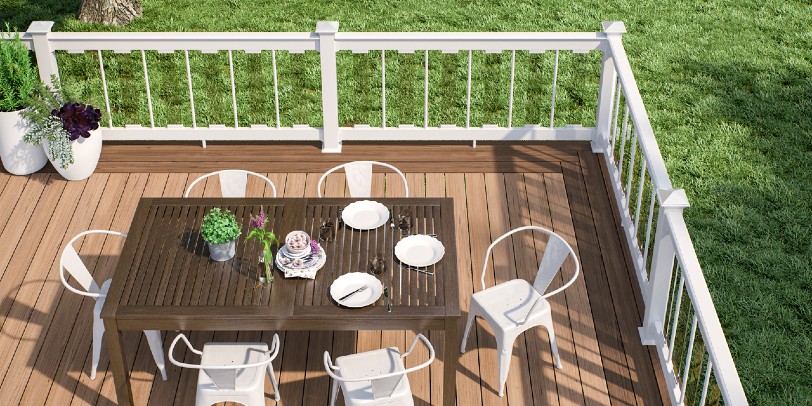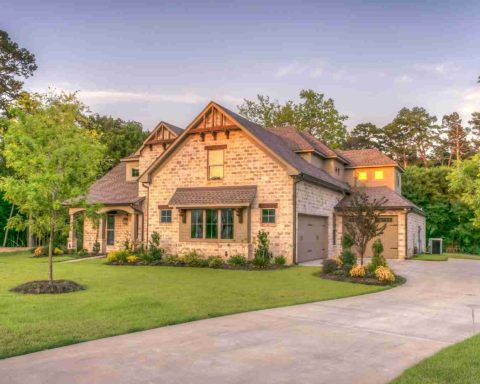Decks have long been a gathering place for homeowners and their families and neighbors. These elevated structures provide an area for dining and socializing and can add value to your home if properly maintained. A good deck can be a huge selling point.
“You visualize the exact spot where the family is playing cards, you’re swaying on the swing, the glass of a beverage sweating in your hand while warm breeze blows through the yard and soft music plays,” says Erin Kiel, a Realtor with Better Homes and Gardens Real Estate Destinations. “At that point, the focus is on the feeling, and you know this home is the one.”
As you house hunt, you might be wondering what distinguishes a deck from other types of outdoor structures such as porches, patios, and lanais. These experts explain the differences and have some advice on how to get the most out of a deck, if you decide to add one to your property.
What a Deck Is
Decks differ from patios and porches, even if there isn’t an official definition for them written across all rules for the MLS (Multiple Listing Services.)
“Unlike a patio, which is built directly on the ground, a deck is a structure that’s elevated from the ground and is typically attached to a home,” says Coleman Cosby, project manager and landscape architect at Yardzen, a digital landscape design service.
Decks are typically made with a variety of pressure treated lumber or other composite materials. Cosby says that the most common wood types for decks are pine, followed by redwood and cedar. You might also see hardwoods such as ipe, cumaru, and tigerwood used. Composite materials, on the other hand, are a mix of recycled materials such as waste wood and recycled plastic, Cosby says.
Decks differ from porches and patios, though you might find people using the terms interchangeably.
“It differs from a porch in that it’s not enclosed, and it does not extend to the roof of a structure,” Cosby says.
Of course, the definition can change as you add features to your deck.
“It can become a porch when there is protection overhead. In this way, a patio is similar to a deck, except it is on ground level and consists of concrete or pavers,” Kiel says. “The term deck can also refer to a concrete pad surrounding an in-ground pool.”
Your deck might also require a railing for safety, depending on where you live.
“Decks are often employed as a way to take in views around the home and are frequently built to extend from a story above ground level,” Cosby says. “One can also build a low deck that extends off the ground level floor of a home—this type of low-profile deck may or may not have railings.”
Anthony Masterson
Does a deck boost property value?
Americans have increasingly turned to their backyards as sources of relaxation and escape, and they’re investing in their yards as an extension of their homes. A livable outdoor space is prized on buyers’ lists as they house hunt.
“One of the top requests amongst Yardzen clients the past year is room to entertain, and among these homeowners, they want ample space for distinct living, dining, and gathering spaces,” Cosby says.
Yardzen data shows a 68% increase in large outdoor dining tables for eight plus people, a 70% increase in outdoor bars, and a 56% increase in requests for fire pits year over year.
“A deck is a great way to achieve these multiple gathering and entertainment zones, especially if you have a multi-story home or if you’re looking to create a transitional space between your home and yard,” Cosby adds.
John Granen
Should you build a deck?
A well-built and well-maintained deck is certainly of added value to your home, but you shouldn’t build one just hoping to reap the rewards down the line should you sell. Instead, consider adding a deck if you plan to use it and if your budget allows for it.
The cost of building a deck will vary based on the materials you chose to use, Cosby says.
“Generally, pressure-treated pine will be the least expensive option when it comes to lumber. Redwood and imported hardwoods tend to be the most expensive,” he says.
Composite decking might be more expensive, but it can last up to 50 years.
“It also requires less maintenance in the way of weatherproofing, repairs, and replacement compared to lumber, which needs a heavy hand of care to stay safe and attractive,” Cosby adds.
Wooden decks can be painted or stained and will have to be restained and sealed on a regular basis following pressure washing, Cosby says.
“I recommend re-sealing your deck every one to two years. For areas with intense sun and heat exposures, make sure to use a sealant with UV protectant,” he says.
Susan Gilmore
All types of decks should be cleaned to remove mold and mildew, which can damage the deck but also make the surface slippery. Cosby suggests looking for a mold- and mildew-resistant solution and to avoid using bleach for this job.
Decide on the right positioning for your deck based on the features and positioning of your property.
“Consider the surrounding environment like trees and position of the sun. Falling leaves and debris will need to regularly be swept or washed off,” Kiel says. “The sun could bake the deck and you may not ever use it if you can’t enjoy it.”
If you live in a colder environment, you can cover the deck in the off-seasons to avoid damage from the elements. You’ll also want to prevent access underneath your deck so animals can’t nest there.
Before you build, be sure you’re fully aware of local ordinances and zoning laws.
“I advise clients to visit their local county website and contact the building department and/or read their county’s Land Development Code,” Kiel says. “In many cases, it may be best to connect with an approved contractor who will then aid in the permitting process and ensure that all specifications are approved by the county.”






